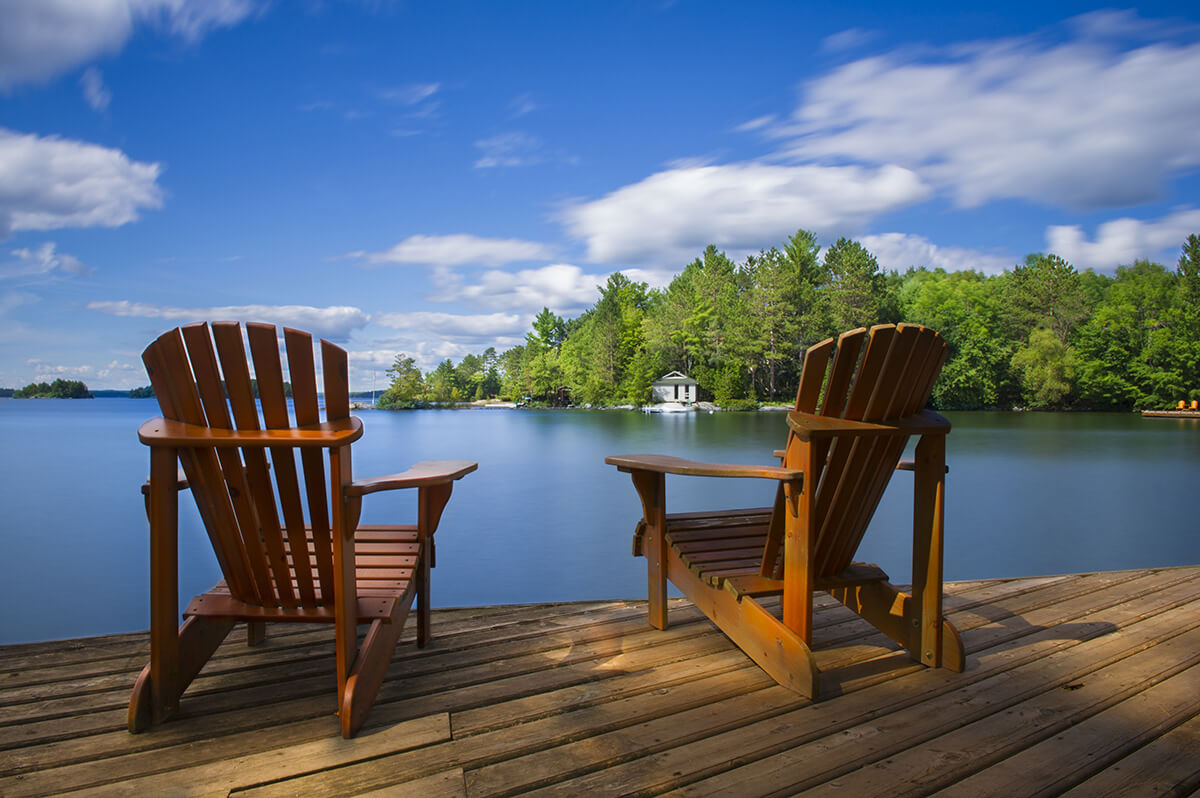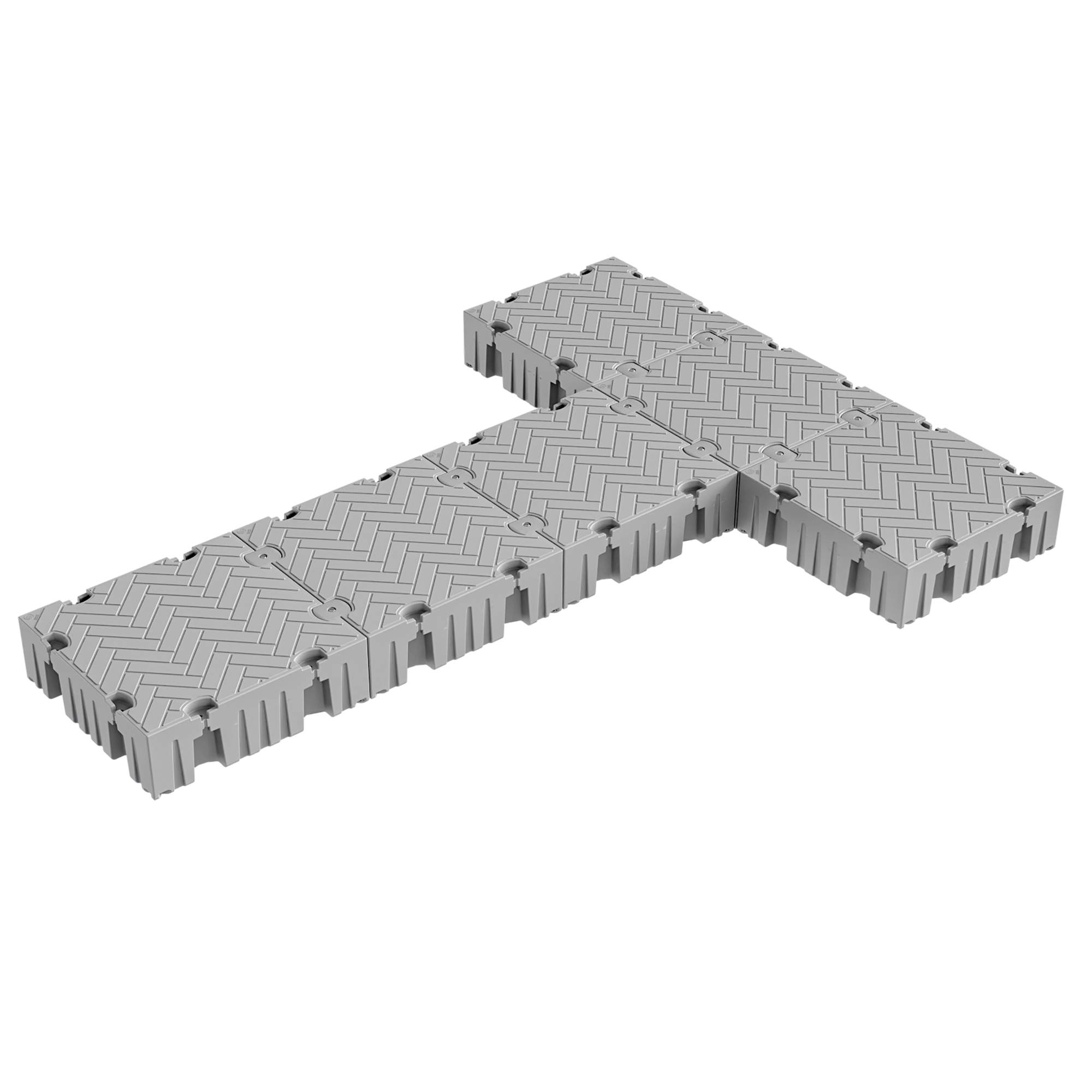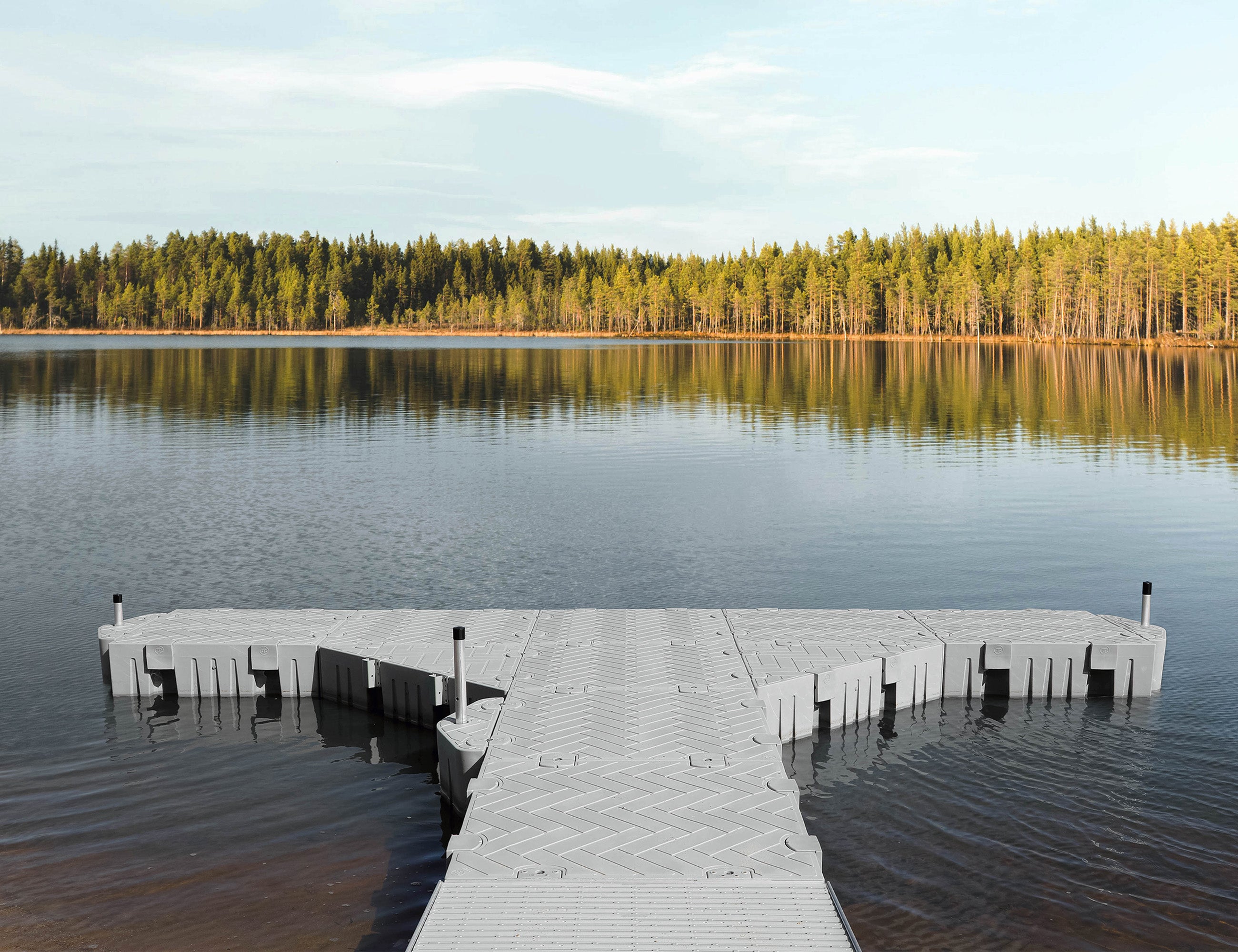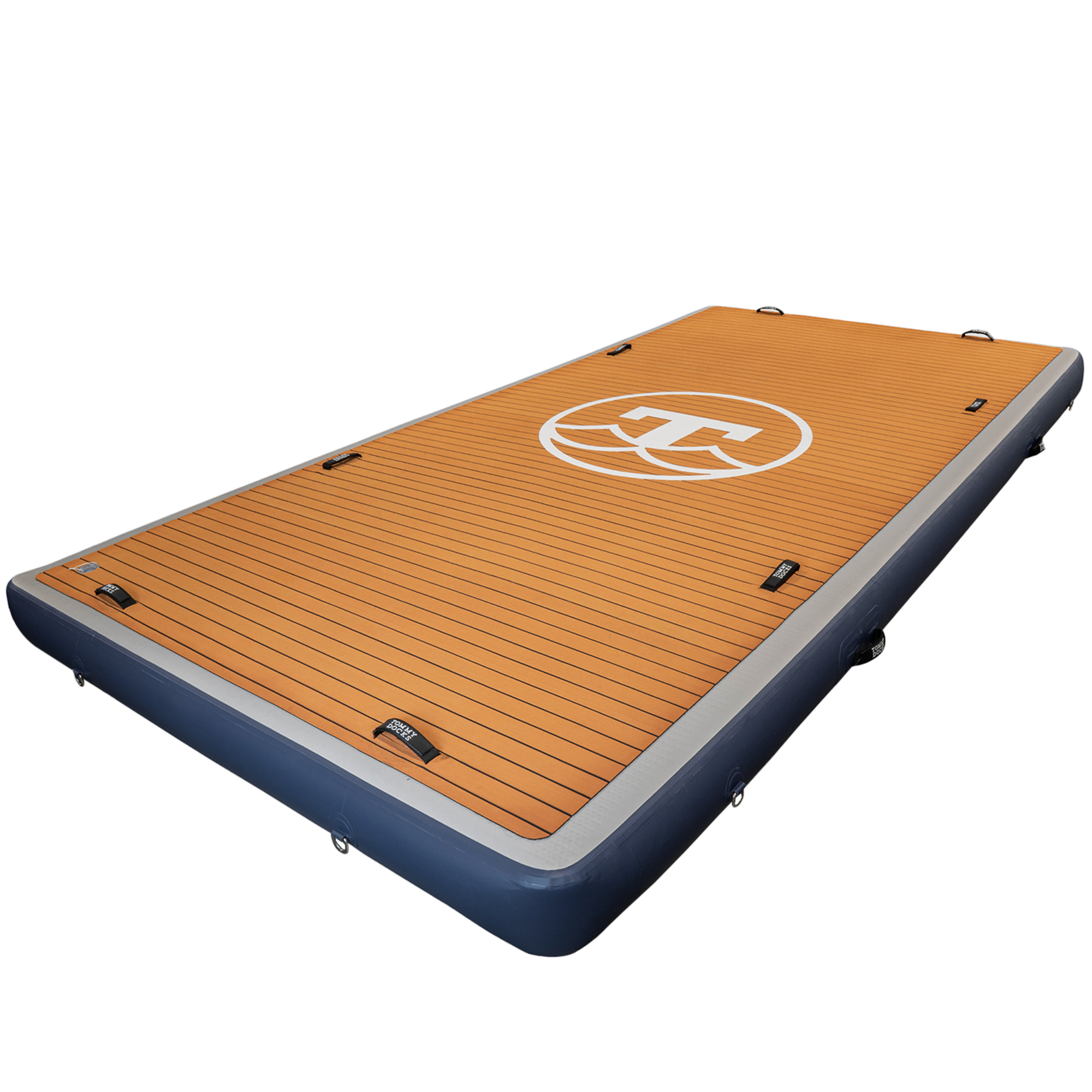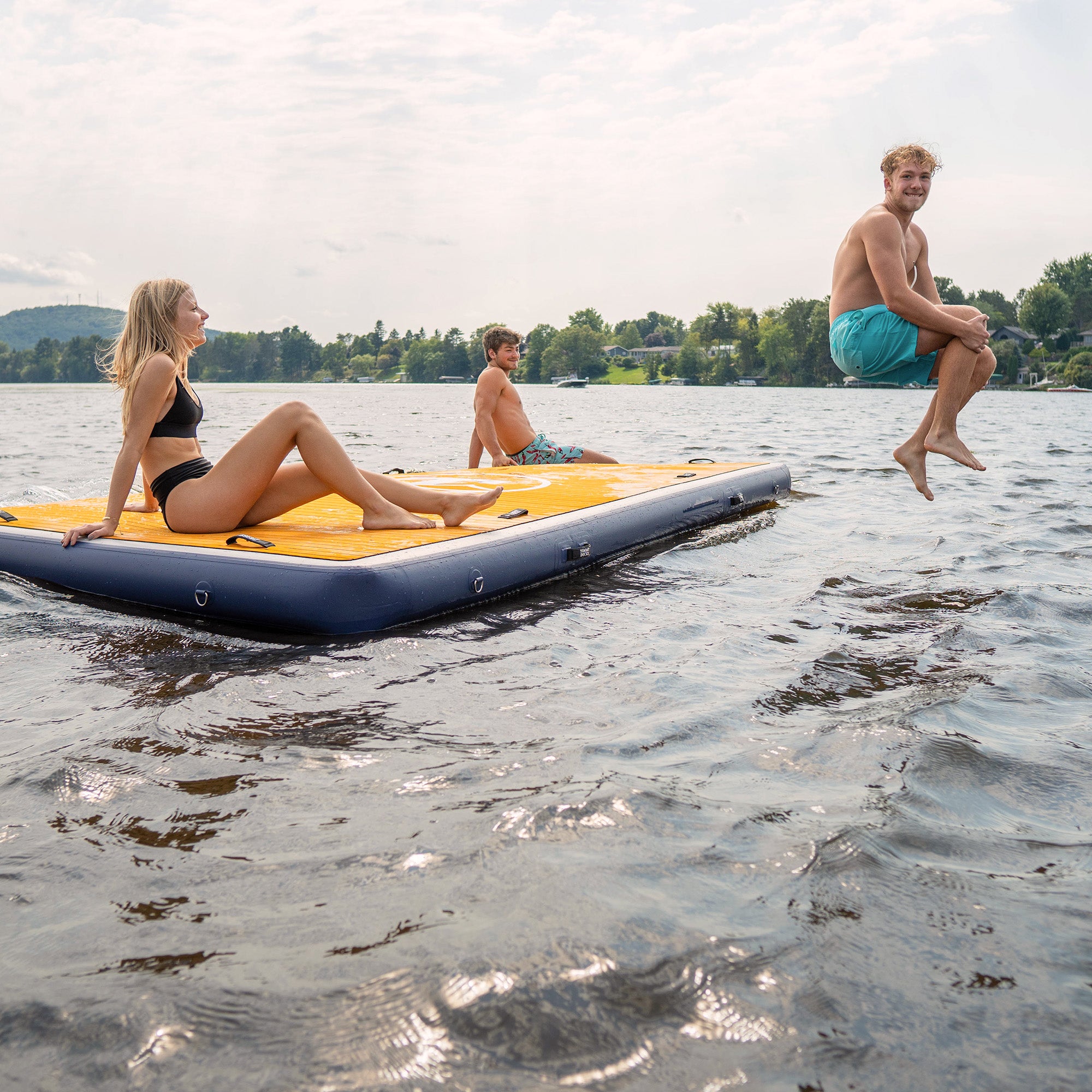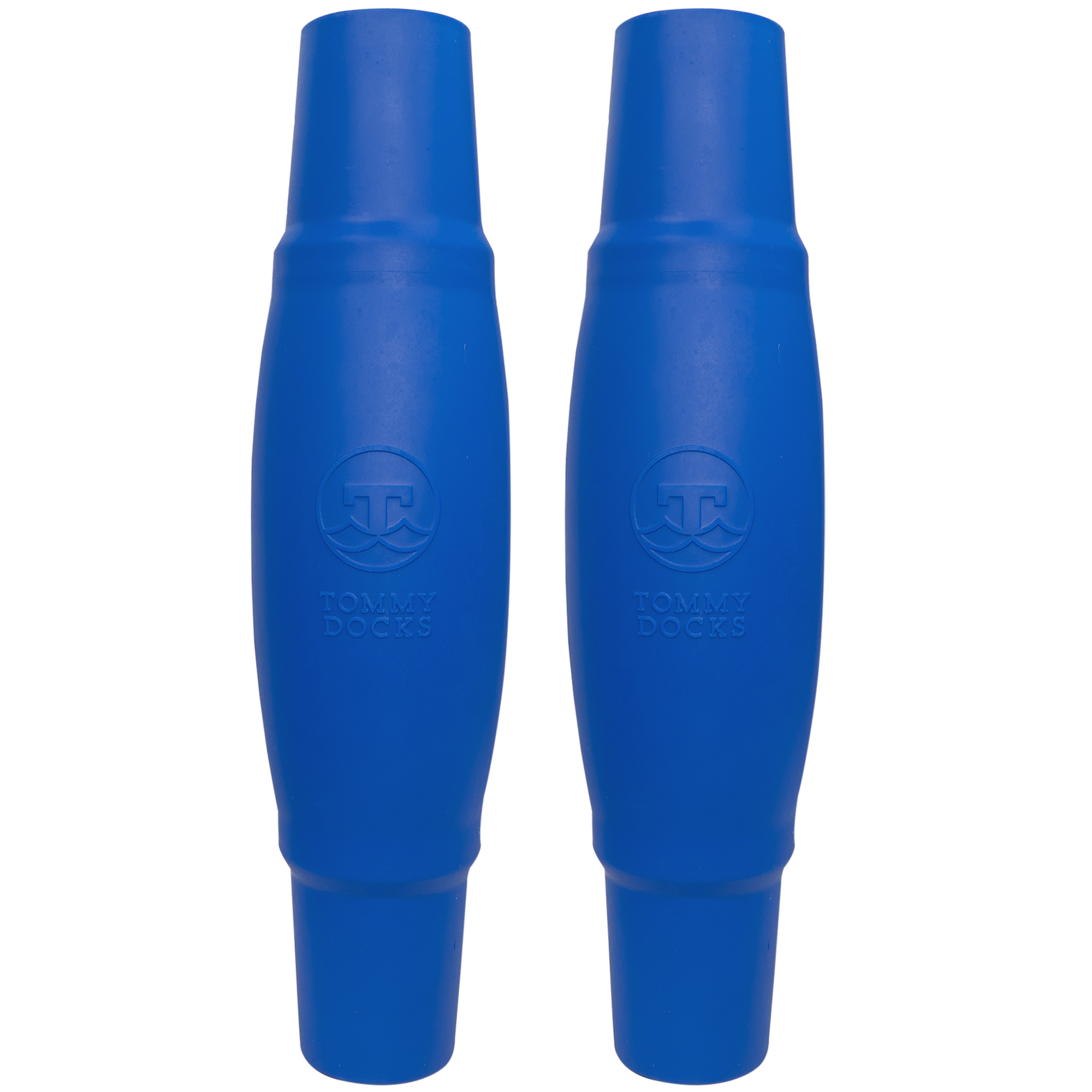There’s nothing quite like spending a day on the water and then returning to your very own dock, tying up the boat, and heading up to the house to wind down. Of course, for most people, doing that requires having a dock, unless you’ve got something small like a kayak or skiff and are happy to just beach it (not recommended). Floating docks are perhaps the most versatile option out there, offering ease of installation, the ability to remove the dock during the winter, affordability, less hardware necessary for construction, and other advantages.
However, you do have quite a few decisions to make during the design and installation process. One of the most critical is the configuration (read: design and layout) of your floating dock. How do you ensure that you’re getting the ideal floating dock layout? Our handy guide will spell out what you should consider.
Shoreline and Lake Bottom Configuration
Before you start thinking about the configuration of your dock, you need to take a long, hard look at the shoreline and the configuration of the lake bottom where you’re planning to install the dock. Why is that?
Unless you’ve got a very shallow draft watercraft (a skiff, kayak, or PWC), you’ll need at least a few feet of water for the dock to be usable. Your shoreline and the lake bottom configuration will dictate how far out into the water you’ll need to build to have sufficient water under the boat to prevent it from grounding. It’s not unusual to have a dock that might extend 75 feet into the water, with only the final 30 feet or so being used for docking due to the shallowness of the water. In most cases, you’ll need two to three feet of water, but that will vary depending on whether you have a typical stern-drive boat with an outdrive or a light outboard rig.
Rules, Regulations, and Local Ordinances
You will also need to consider the various rules, regulations, and local ordinances that apply to your dock before installing it. Many areas have specific requirements that your dock must meet and failing to do so could mean pulling it back out of the water and retrofitting or even redesigning it. You could also find yourself facing fines and other penalties. The best path forward is to check with your local authorities long before you begin designing your dock so that you don’t get your heart set on a particular layout or design only to find it’s not feasible in your area.
The Number of Watercraft You Have
At a minimum, your dock layout must be configured to handle the number of watercraft you have right now. It’s wise to plan for the future, too. For instance, if you have a couple of kayaks now but plan on adding more, or you plan on upgrading to a couple of center consoles, you’ll certainly want to think about your layout so no changes are needed later. What if you want to buy a pontoon boat or a deck boat? Will the dock be large enough?
Know where you stand right now, but also plan with an eye toward your future. Even if it’s not feasible to build a very large dock right now, it might be possible to design a floating dock that can be easily expanded to accommodate more boats or larger watercraft in the future.
People, Boats, and Accessories
Docks aren’t just for tying up at the end of a long day of fishing on the water. They also serve as outdoor living space – a couple of Adirondacks and a cooler of iced drinks and you’ve got a great place to enjoy the sunset, for instance. If you’ve got the budget, you could do even more.
Plan your floating dock layout to suit the number of people you envision hanging out and spending time on and around the dock. If it will just be you and one or two other people and you don’t expect to spend any time on the dock doing anything other than loading and unloading the boat, going minimalist is fine. However, if you want to have a place for the entire family to hang out, have a picnic, or just soak up the summer sun, you might want to go larger even if you don’t have larger/more watercraft that would require a larger dock.
The Most Common Shapes
Floating docks can have a wide range of layouts. Some of the most common include:
- Straight
- L-shaped
- T-shaped
- U-shaped
- Y-shaped
Each shape offers different possibilities and will suit varying numbers of people and watercraft, as well as the associated toys, gear, and accessories you need. How many boats will be using the dock at one time? How much gear will you need to stage for loading/unloading? Will you have a lot of lake toys that need to be stored close at hand? Do you need additional space for chairs, tables, fish-cleaning stations, power stations, or anything else?
Will you have a lot of wind to worry about? Will the wake of passing boats be a problem? In these instances, L and T-shaped extensions can provide shelter for your watercraft. Simply tie up on the opposite side of the wake or wind direction and the extension will help break up some of the energy while also pushing your boat away from the dock (rather than pushing it into the dock).
Finding the Perfect Floating Dock Layout
Choosing the right layout for a floating dock takes time and careful consideration. You need to know your shoreline and lake bottom. You need to consider local regulations, too. Of course, your usage needs will also play a major role.
The best advice is to take your time, carefully consider what you want now and how your needs might change in the future, explore the various shapes and what they offer in terms of space and utility, and then go from that point. Ultimately, it’s the only way to ensure that you get a floating dock that offers everything you need and will be a treasured part of your lake experience for decades to come.
Contact Tommy Docks today for any of your Dock Kits, Dock Hardware, or Dock Accessory needs!

